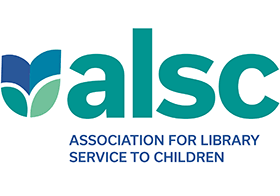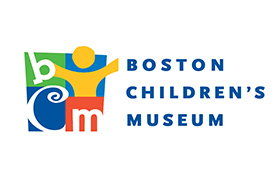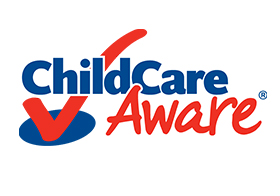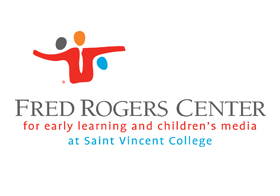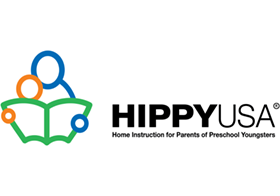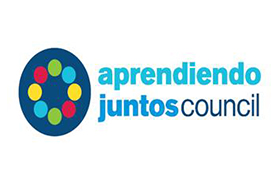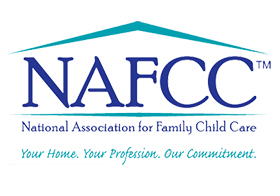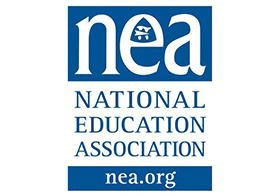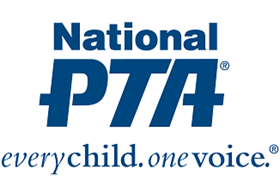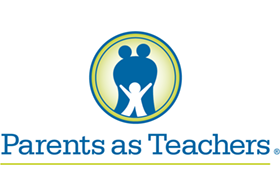About Our Games

Science: Natural Cycles
All plants and animals go through cycles, but the stages of each look very different. In this game, kids choose a plant or animal from the landscape and find out how it changes and grows over time. The stages of the cycle are pictured in a circle, but some are missing! Kids put them in the right order to see them grow up and start small again.
There's something for everyone here, with life cycles of a butterfly, turtle, sunflower, dandelion, and more. For younger kids that may not be familiar with natural cycles, parents can play along, helping their kids tell the story of each cycle.
For some anywhere science activities about how things grow and change, try Now and Then, Growing Sunflowers, or Changing Over Time.

Math Skills: Estimating Distance and Counting
Clicking the buttons lets Frog choose a small, medium or long jump. Missing a lily pad lands Frog in the water. But don't worry: she'll be ready to start again when she hops out a moment later!
It may take a few attempts to judge the distances, but that's the fun of the game. Look for other characters on the bank, including — if you get to the end — Quack, who also has the Very Important Task of counting all the hops. Feel free to count along with your kids as they play.
For some anywhere science activities about estimation, try Measuring with Steps, Measuring Your Journey, Pouring Water, Measuring Time, or Sharing Snacks.

Science: Mixing Colors
By clicking on the tubes, players can make Quack squirt up to two blobs of blue, yellow, and red paint onto a fence. Clicking on the hose washes the paint off, enabling kids to have a fresh start.
Kids can experiment with whatever colors they like. The narrator reminds kids when tubes are empty.
Chirp also offers kids the opportunity to match a color by holding up a card. If the color orange, purple or green (which make up the secondary color group) is successfully created, Chirp offers some of the harder-to-mix tertiary colors. Like many of our games, this one gets harder only if the player is succeeding. Younger kids will be happy simply squirting paint, and perhaps making orange, purple, or green.

Science: The Way Things Move
Quack wants to get his apple to fall into the water, but there are sticks blocking the way! Who put those there, anyhow? Players can't get rid of the sticks but can turn them in different directions to create a path for Quack's apple to roll into the water. Once they get it, the next setup will be a little harder.
In the spirit of engineering and the design process, kids can have as many tries as they need to perfect their routes — Quack has an unlimited supply of apples. Kids are encouraged to keep testing and tweaking until they get that apple in the pond! Remember to avoid the rabbit holes, bunnies don't seem to share.
For some anywhere science activities about the way things move, try Rolling Down a Tube Track, Rolling Down a Ramp, or High Rollers.

Math: Shapes
Our world is made of shapes. They're everywhere you look! Triangle roofs, circle eyes, and square houses, just to name a few. In this game kids click things that look like certain shapes and when they've found them all, the shapes come to life along with the characters.
Recognizing and identifying similar shapes in the world around us is a basic skill that will help with math concepts later on too. Kids are asked to find things that are round, have three sides, or have four sides. Some of them might be pretty tricky, but Chirp will help you out. Pretty soon you'll be spotting shapes everywhere you go.
For some anywhere science activities about shapes, try Making Prints, Making Hand Shadows, Looking Closely, or Parts and Wholes.

Science: Sound
This game encourages kids to explore music. It allows them to mix and match sounds as they click on characters that represent different musical rhythms. They can even give Quack something he has always wanted: a solo!
This is an open-ended activity, and also encourages offline exploration. Help your kids explore sounds around them and let them make some noise of their own. An improvised kitchen orchestra with pans, whisks, bowls, and wooden spoons can be a great way to introduce many of the properties of sound.

Science: Balance
Four seats on a seesaw, along with an array of bunnies, let kids experiment with balance. There are five sets of bunnies, each set with its own distinct size, color, and weight. In this game, the bigger the bunny, the heavier it is — but don't forget to let your kids know that's not always true in the real world. (Help them to discover that a stone weighs more than an inflated balloon.)
Because they can drag bunnies to any seat, kids are encouraged to experiment. Prompts also ask them to try to balance the seesaw, or to make one end heavier or lighter than the other. As the game continues, players are encouraged to see what happens when bunnies are placed nearer the middle. Extended play thus covers the basics of balance, including the concepts of weight, size, and even distance from the fulcrum.
For some anywhere science activities about simple tools, try Balancing on a Seesaw, Building a Bridge, Building a Castle, Building a Pond, Examining Gadgets, Making a Dam, Making Bathtub Boats, Making Things Bigger, or Reusing Trash.

Science: Animal Habitats
This simple matching game has a twist: Kids turn pairs of leaves, not to find identical pictures, but to pair animals with their homes. This game can be played using skill or trial and error.
The game has been carefully constructed to demonstrate that some habitats (such as trees or water) are home to many different animals. However, on any given round, kids will be asked to match only one animal to any particular habitat.
For some anywhere science activities about animal habitats, try Building a Rabbit Den, Digging a Hole, Going on a Bug Walk, Hunting for Animal Homes, or Making Homes for Creatures.

Math: Sight Counting
Quack is underwater visiting his fish friends and giving them balloon rides. In order find out how many balloons he needs, kids have to tell him how many fish there are. The only problem is there's not much time to count them! Fish swim across the screen and kids try to tell "at a glance" how many there are.
Sight counting, or "subitizing", means seeing how many objects there are without having to count them each individually. This is a useful skill that can be improved with practice and these fish are giving kids a chance to do that by changing their formation and speed. Don't think the fish are trying to help though, they're really just in it for the balloon rides!
For some anywhere science activities about counting, try Keep the Change, Measuring with Steps, or Parts and Wholes.

Science Skills: Patterns
Eight fish swim gently in a line. Kids must observe the pattern the fish form and select which fish, from a choice of three, to assign to the rightmost position. If they are correct, Quack will respond and a new set of fish will appear.
Almost all of our games are self-leveling. If players answer a round without error, they are offered a harder level in the next round. If they do make an error on the way to success, they remain at the same difficulty level for the next round.
In this way, the games keep kids within their own comfort levels, nudging them to more challenging levels only if they are ready.
For some anywhere science activities about patterns, try Categorizing Your World, Making Tracks, or Sorting Collections.

Science Skills: Observation
Every good scientist needs a keen eye. In this game, characters peek from their hiding places in the tool shed. The narrator calls out their names. Players are then asked to find all of the characters.
The first level has three characters hiding. If they are all found, the lights go out and the characters hide again, ready for the next round. The difficulty increases only if the previous round was successfully completed without mistakes. So if a player finds the first three characters without error, she will meet those three, plus a new one, in the next round.
Younger kids may not progress beyond these early levels, but don't worry: it's pretty tricky. The levels progress to eight hidden characters, which can even be difficult for most adults to find without error. Try it yourself when the kids are in bed!
For some anywhere science activities about observation and memory, try Changing Over Time, Looking Closely, Observing Sticky Things, Observing the Day Moon, Observing Tides, or Searching for Animals.

Science: Sound
In this online variation of Hide and Seek, Quack hides in a number of different locations. In each location, different hiding places change the way Quack's voice sounds. Is he muffled, or maybe far away? Is he down a hole, or underwater? Players can help Peep find Quack by listening as they look for him. There are also a few surprises along the way!
If the player finds Quack, he'll hide again. (Ducks are excellent hiders, as Quack himself modestly states.)
For some anywhere science activities about sound try Hunting for Sounds, Listening to Night Sounds, Listening to Echoes, or Playing Marco Polo.

Math: Dividing
It's springtime and the ground is covered with cherry blossoms! Chirp and Quack have collected a pile of them and need help sharing so that each has the same amount. Players drag the flowers to divide them into equal groups until Chirp and Quack have all the flowers and both are happy.
When players get really good, Peep might decide he wants some flowers too. Then, the blossoms will need to be divided three ways! By the way, keep an eye out for those mischievous chipmunks...
Every time kids share things with their friends, they are practicing math skills. After handing out each flower, kids compare to see who has more. Once the flowers are split equally, kids have successfully solved a division problem! This game makes a great introduction to these concepts without looking like a math problem.
For some anywhere science activities about division, try Parts and Wholes, Perfect Portions, or Sharing Snacks.

Math Skill: Repeating Patterns
Jump! Spin! Jump! Spin! Jump! Spin! Uh oh, don’t get too dizzy! Come dance with Peep and his friends in this silly pattern game.
Children will love helping Peep jump and jive by figuring out what dance moves come next in each repeating pattern. As kids successfully complete each level, the patterns will become more complex and prompt children to select the right move from an even larger selection of icons. Throughout the game, children will also have the opportunity to make different dances by creating their own patterns!
By identifying and understanding basic patterns, children will begin to learn important skills needed for later math proficiencies, such as algebra. Encourage your child to not only watch Peep and his friends dance through the pattern, but to get up and dance along! You can also try finding patterns together at home or in your backyard.

Science Skill: Ramps/ The way things move
Using a combination of ramps, springs, and bouncy tires, kids will design a system that delivers a berry from Chirp to a very hungry Quack. With a never ending supply of berries, children are able to modify and test different systems as many times as they want, even if they have already successfully completed the level.
As players become more familiar with how objects move and interact with one another in the game, they may discover multiple ways to maneuver a berry to Quack.
Children are born curious and love to explore the world around them. Understanding the way things move will help kids navigate their environment and prepare them for later science study.

Science Skill: Animals (Animal Tracks)
Have you ever seen animal footprints in the snow or mud? Have you ever followed them to see where they go?
Children will use their inquiry and observation skills to help Peep find his friends on a cold winter day. As Peep looks for his friends, he comes across different sets of animal tracks. Kids need to figure out which footprints Peep should follow to find the right friend. Here’s a tip—try counting the number of toes on the animals foot and match them to the number on the footprint.
Children will also enjoy collecting berries as they trek through the snow on the way to each friend’s home.
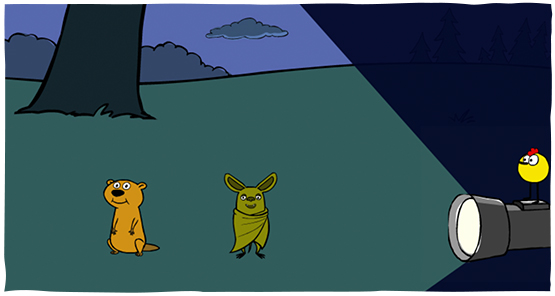
Science: Qualities of Light
In this HTML5 game, modeled after flashlight tag, children can play with Peep anywhere! Can you help Peep find his friends in the dark? Just point a flashlight into a night scene to find the animals he's looking for. With success, the game gets increasingly harder with more animals to find and a smaller beam with which to find them. Learn who's up waaay past their bed times (Quack and Chirp...) and who is just waking up. "Hello, Raccoon!"

Science: Light (Shadow)
In this nighttime game, children will explore how shadows change size and shape by moving objects in front of Chirp’s flashlight. Kids will be challenged to think about what happens when they move a ball closer to the flashlight. Will the shadow get bigger or smaller?
While shadows can be a difficult concept for children to grasp, this game will guide them through some of the basic properties of light. Understanding how light and shadows behave will help Preschoolers better understand their own world.
Try setting up a flashlight at home or going outside on a sunny day to look at even more shadows. Encourage your child to use toys or his or her hands to make different shadow shapes!

Science Skill: Sound (Pitch and Tempo)
This self-paced game encourages children to experiment with sound by creating their own music. Players will open and close brightly colored flowers for Hummingbird to land on or pass by as she flies across the garden. When she lands on a flower, she will hum a sound—the more open flowers, the more sounds she will hum, creating an original melody!
Throughout the game, children will be prompted to incorporate high and low sounds into their songs. For kids who want to explore sound even more, they can try changing how fast or slow Hummingbird flies to each flower. By allowing kids to change her speed, they will discover how sounds change when the tempo increases or decreases.

Science Skills: Observation
A good scientist is a keen observer of the world. In this game, Peep and Chirp take kids on increasingly cluttered strolls. Kids must remember what they have seen on each leg of the journey, progressing to the next level when they successfully report on something they just saw.
In the spirit of self-correction, if kids make an error, they can walk past the same objects again to have another look. Peep and Chirp alternate between rounds to help kids recognize that they have a new set of objects to review.
The later rounds can be tricky, since there are many more objects to observe and some are only partially visible.
For some anywhere science activities about observation and memory, try Drawing a Map, Observing Animal Differences, Observing Animal Movements, Watching Baby Animals, Observing Animals Indoors and Out, or Observing Small Creatures.

Science Skills: Categorizing
Chirp is a collector. Raccoon has a big pile of junk. Could this be the perfect friendship?
In this game, kids sort objects using increasingly sophisticated criteria. Initially, the game requires them to sort by color. Subsequent rounds lead to more complex sets like Things You Can Eat and Metal Things.
Once kids have assembled four objects, they will be told how many are correct. Because we feel it's important to let kids correct their own mistakes, kids can then click on any items to remove them. If there is a long period of inactivity, the goal will be restated.
Players might notice that objects can fall into more than one set. A red apple might be in the Red Things, Things You Can Eat, and Things That Grew sets. Older kids may also get a kick out of trying to guess what the set will be before it's announced. They can do so by watching the items as Raccoon hurls them from his hideaway.

Skill: Physical Fitness
Jump up and dance with Peep and his friends!
Clear the decks and get your heart pumping with Peep, Chirp, Quack and their woodland friends! You can get your groove on with a 10 minute dance routine, which includes warm-up and cool-down sequences, or pick a custom set of 30 second moves to create your own dance. Either way, you can move at your own pace advancing to the next move or pausing the dance to catch your breath.
Research suggests that early childhood is a key age to promote healthy behaviors and what could be more fun than getting fit with the Peep Wiggle, Chirp Hula and Quack Boogie? Beaver Jazz Hands, anyone?

 Español
Español




























